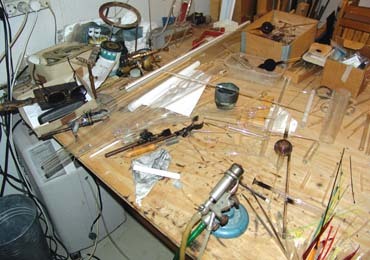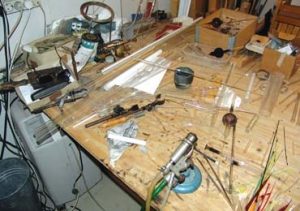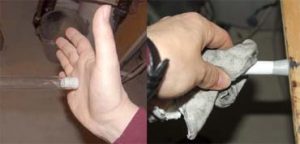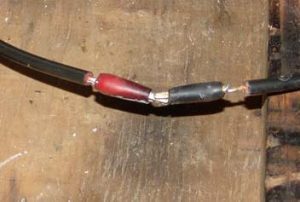August is my annual vacation time, as it is in much of Europe. But, shortly before the shop closes and workers depart, some jobs are hurriedly finished. Predictably, haste triggers accidents, injuries and lost work time.
The old phrase, that dangers are much less perilous if you’re aware of them, still applies. During countless neon-shop visits, I’ve seen setups that promote safety (see ST, October 2003, page 32) and other crude arrangements that, miraculously, circumvent accidents. Remember, it’s the shop owner’s responsibility to enforce safety regulations.
Safety basics
Bending glass for neon poses a few hazards. However, cuts and burns, the most common injuries, are rarely lethal. At worst, deep hand cuts may sideline a worker for a couple of weeks.
Often, accidents occur when ramming a cork into the open end of a glass tube with the palm of your hand. Glass can, and will, break at inopportune times, and it often stabs hands. Also, when filing the line of bent glass, especially in the middle of ribbon bends, don’t squeeze while holding it. When small-diameter tubing is cut, a small, razor-sharp, glass peak often protrudes. Avoid being cut by this peak by rolling the tube’s edge on the table or steel plate at an angle to break off the tiny bits.
The first thing a rookie neon bender learns is that hot glass and cold glass look alike. However, hot tools (metal screens, tweezers, hand torches or crossfire heads) aren’t usually considered safety hazards until someone learns the hard way.
When glass is heated too quickly, it tends to scatter. I like to demonstrate this in the summertime, when some tubebenders wear shorts and sandals to work. I’ve even seen benders working barefoot in shops and hot-glass studios. Needless to say, such people are at high risk.
Skin will roast in seconds if someone works too close to the ribbon burner with bare body parts. The radiant heat will transfer to metal on a person’s clothing and cause a burn if it’s touched. Fashion isn’t exactly a priority in a neon shop; workers should wear 100% cotton, long-sleeve garments. Unlike cotton, any synthetic material will melt and continue to burn if it catches fire.
Processing hazards
The pumping area also poses hazards. Anyone near it must be careful. The bombarder is a lethal electrical source. A good bombarder could power 10 electric chairs simultaneously. Consider the following questions:



 Photo Gallery2 weeks ago
Photo Gallery2 weeks ago
 Ask Signs of the Times2 weeks ago
Ask Signs of the Times2 weeks ago
 Paula Fargo1 week ago
Paula Fargo1 week ago
 Real Deal6 days ago
Real Deal6 days ago
 Photo Gallery1 week ago
Photo Gallery1 week ago
 Women in Signs2 weeks ago
Women in Signs2 weeks ago
 Projects6 days ago
Projects6 days ago
 Women in Signs2 weeks ago
Women in Signs2 weeks ago












